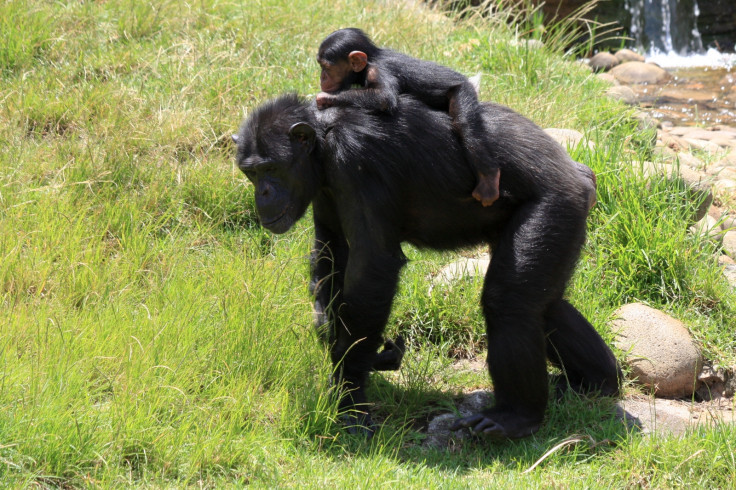Chimpanzees learn to play Rock, Paper, Scissors
The animals performed like four-year-old human children.
Chimpanzees are able to learn the rules of rock-paper-scissors, as well as children, scientists have shown. It just takes them longer.
At the heart of the popular hand game is a circular pattern between the three different hand signals. Scissors beat paper which in turn beat rock which in turn goes on to destroy rock.
Learning and understanding such circular patterns requires enhanced mental capacity and is useful when forming complex relationship networks and solving problems.
The scientists wanted to understand whether chimpanzees, our closest relatives, could also grasp these patterns like we do.
In a study now published in the journal Primates, they compared the ability of chimpanzees and children to learn the rock-paper-scissors game.
Seven chimpanzees of different ages and sexes from the Primate Research Institute at Kyoto University were involved in the experiment.
The scientists showed them a computer-based touch screen and were showed a pair of hand images reflecting two different options of the game. They trained the animals to choose the stronger of the two options based on the rules of the game.

The chimpanzees first learnt the paper-rock sequence, then the rock-scissors one and finally the scissors-paper combination. Once they knew how the pairs fitted together, all the different pairs were randomly presented to them on screen.
The scientists found that the chimpanzees were able to learn the circular pattern at the heart of the game, but that it took them significantly longer to learn the third scissors-paper pair than it did to grasp the two other pairs. This suggests that they had difficulty finalising the circular nature of the pattern.
The scientists also taught 38 young children between the age of three and six years old the rules of the games. They found that these children had less difficulty grasping the game, and on average did so within five sessions.

Their performance however depended greatly on their age. Indeed, the older children appeared to be more accurate when they were told to select the stronger option when all three pairs were randomly presented to them.
Comparing the performances of children and chimpanzees, the researchers found that the animals performed like four years old when randomly presented with the pairs.
"This suggests that children acquire the ability to learn a circular relationship and to solve a transverse patterning problem around the age of four years," concluded lead authorJie Gao of Kyoto University. "The chimpanzees' performance during the mixed-pair sessions was similar to that of four-year-old children."
© Copyright IBTimes 2025. All rights reserved.






















